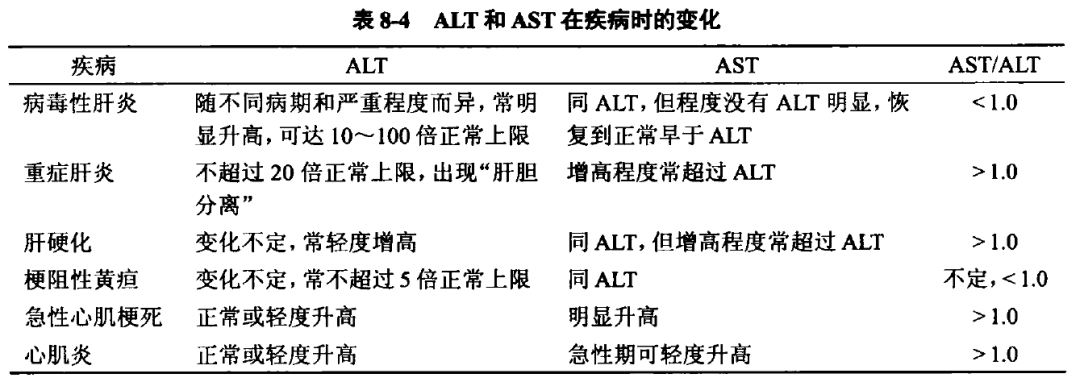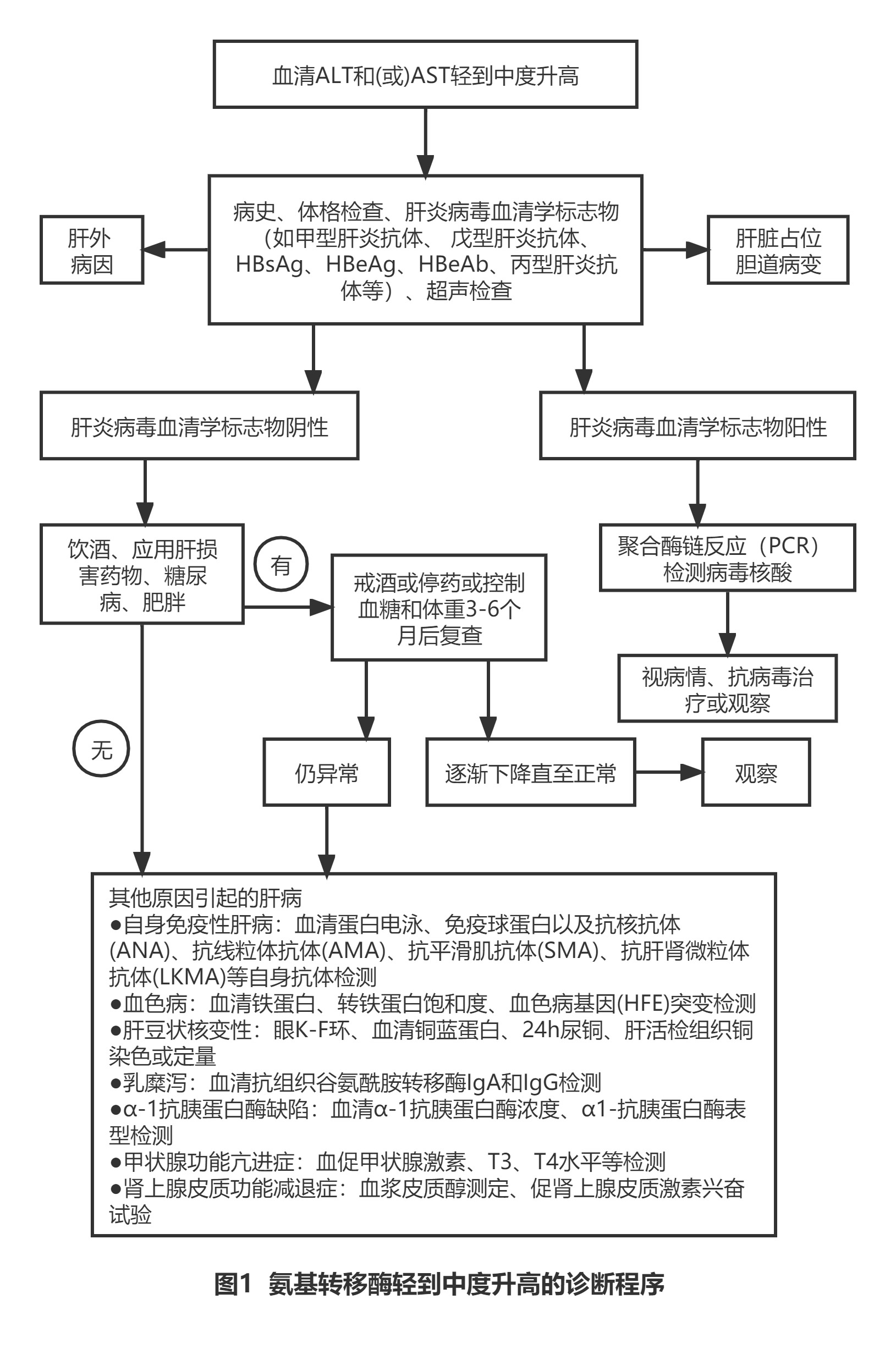Release date:2022-05-07
Recently, some friends have sent me their physical examination reports, asking for help in interpreting their results. As expected, many of them have joined the ranks of fatty liver, with some showing slight elevation in liver enzymes. So this time, let's review liver enzymes together.

I.When do liver enzymes increase?
Liver enzymes usually refer to alanine aminotransferase (ALT) and aspartate aminotransferase (AST).
ALT is mainly found in the liver, kidneys, and heart, with the highest content (activity) in the liver, making it a very sensitive marker for diagnosing liver cell damage. AST has the highest content in the heart muscle, followed by the liver. In clinical practice, ALT and AST are mainly used to assess the degree of liver cell damage.
Inside liver cells, ALT mainly exists in the non-mitochondrial fraction, while about 80% of AST exists in the mitochondria, namely the mitochondrial isoenzyme of aspartate aminotransferase (m-AST). When liver cells are damaged, the permeability of the cell membrane increases, leading to the release of ALT and AST from the cytoplasm into the bloodstream. In moderate liver cell damage, the leakage rate of ALT is much higher than that of AST. Additionally, the half-life of ALT (47 hours) is longer than that of AST (17 hours), making ALT measurement more sensitive to liver cell damage than AST. However, in cases of severe liver cell damage, mitochondrial membrane damage can lead to the release of AST from the mitochondria, resulting in an elevated ratio of AST to ALT (AAR) in the serum. Therefore, calculating the AST/ALT ratio is highly valuable for the differential diagnosis of acute and chronic hepatitis and for determining the prognosis of hepatitis.

II.Liver Enzymes and Non-Alcoholic Fatty Liver Disease (NAFLD)
In recent years, fatty liver has become very common. Surveys have shown that the prevalence of fatty liver detected by ultrasound in the general population has increased from 15% to over 31% in the past decade.
Non-alcoholic fatty liver disease (NAFLD) includes simple fatty liver and non-alcoholic steatohepatitis (NASH). Simple fatty liver is an early manifestation of NAFLD, and the population with this condition usually exhibits signs of overnutrition, obesity, and metabolic syndrome. NASH is a more severe type, and the severity of inflammation is judged based on the presence and degree of liver fibrosis in patients, and it can even progress to cirrhosis. According to the "Guidelines for the Prevention and Treatment of Non-Alcoholic Fatty Liver Disease (2018 Update)," 10%~30% of NAFLD cases are NASH.
Simple fatty liver generally has normal or only slightly elevated liver enzymes, with an AST/ALT ratio <1. A sustained increase in ALT levels suggests the possible presence of NASH. However, normal ALT levels do not mean you can relax your vigilance. The most important thing in treating fatty liver is to change unhealthy lifestyles, adopt a healthy diet, and increase exercise. Losing 7%~10% of body weight can significantly reduce liver enzymes and improve NASH.

III.Liver Enzymes and Alcoholic Liver Disease (ALD)
Alcoholic liver disease (ALD) is a liver disease caused by excessive alcohol consumption. The prevalence of alcoholic liver disease in some areas of China is 4%6%. If left untreated, alcoholic liver disease can progress to alcoholic hepatitis, alcoholic liver fibrosis, cirrhosis, and even liver cancer.
Liver enzymes ALT and AST may be elevated in alcoholic liver disease. When the AST/ALT ratio is greater than 2 and AST is within 300 U/L, it suggests alcoholic liver disease.
Alcoholic liver disease can usually recover with abstinence, and ALT and AST levels decrease significantly after abstinence. Abstinence is the fundamental measure for preventing and treating alcoholic liver disease. Generally, liver tissue can recover its function 48 weeks after abstinence from alcoholic fatty liver, but if it progresses to alcoholic liver fibrosis, the recovery will be slower.


IV.Liver Enzymes and Other Liver Diseases
Apart from non-alcoholic fatty liver disease and alcoholic liver disease, other liver diseases may also cause elevated liver enzymes, as shown in the table below:


V.How to deal with mild elevation of liver enzymes
In general, patients with an elevation of aminotransferases of less than 2 times the upper limit of normal (ULN) and no clinical symptoms, with normal levels of albumin (Alb), prothrombin time (PT), and bilirubin (Bil), can be temporarily followed up and observed.
If the re-examination shows high levels, they should proceed to a specialized hospital for differential diagnosis and treatment.

In general, mild elevation of liver enzymes found during a physical examination is nothing to panic about. If there are no other abnormalities in liver function indicators, you can wait for a period of time and then have a re-examination. If the elevation is significant, you can consider detailed examinations based on whether you have risk factors for liver disease.
Of course, physical examinations can only detect diseases. To protect liver health, the most important thing is to develop good habits, pay attention to a healthy diet, drink alcohol in moderation, and exercise regularly.
References:
[1]Fu Weiling, Xu Keqian (eds.). Clinical Biochemistry Test. Beijing: People's Health Publishing House, 2012.01.
[2]Wan Xuehong, Lu Xuefeng (eds.). Diagnosis and Treatment in Clinical Laboratory Medicine, 9th Edition. Beijing: People's Health Publishing House, 2018.06.
[3]Shang Hong, Wang Yusuan, Shen Ziyu (eds.). National Clinical Laboratory Operating Procedures. Beijing: People's Health Publishing House, 2015.01.
[4]Ge Junbo, Xu Yongjian, Wang Chen (eds.). Internal Medicine, 9th Edition. Beijing: People's Health Publishing House, 2018.06.
[5]Chinese Society of Hepatology, Chinese Medical Doctor Association, Fatty Liver and Alcoholic Liver Disease Group, Expert Committee on Fatty Liver Disease. Guidelines for the Prevention and Treatment of Non-Alcoholic Fatty Liver Disease (2018 Update). Journal of Practical Hepatology, 2018, (Issue 2).


